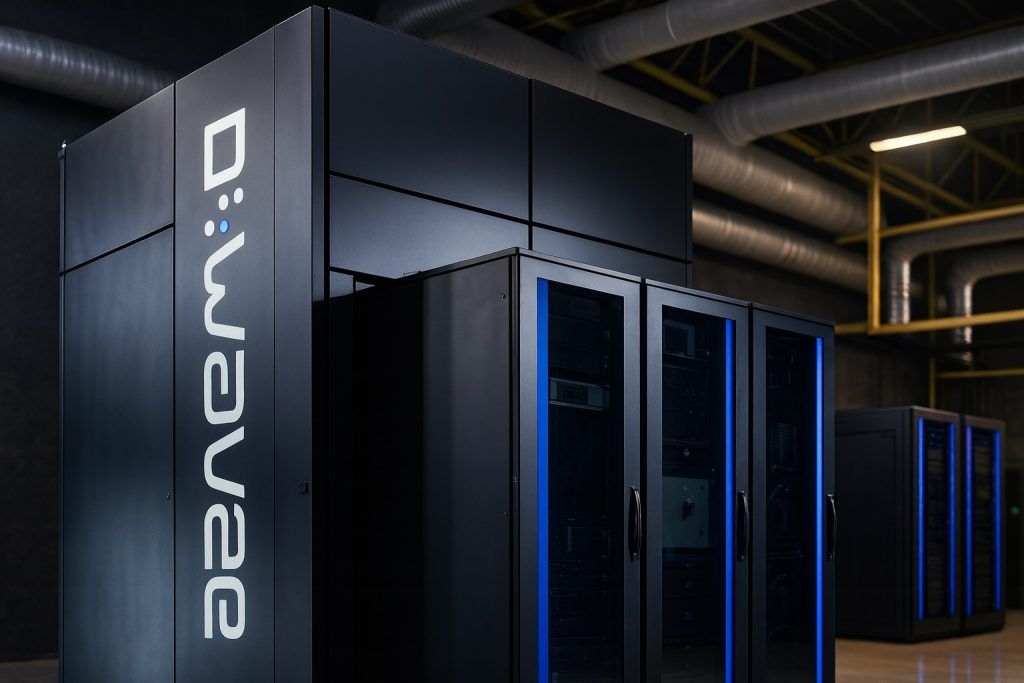Stock run-up: BBAI shares are up roughly 80–100% year-to-date (2025) and over 300% from a year ago [1]. The stock recently spiked on defense-AI deal news (hitting ~$9.39 on Oct 14) but has since cooled, trading around $6.6–$7.2 by Oct 22 [2] [3]. – Latest deals: On Oct. 13 BigBear.ai announced a partnership with Tsecond to deploy its ConductorOS AI software on rugged field hardware – an “edge AI” solution for tactical military use [4] [5]. In September it teamed with SMX for the U.S. Navy’s UNITAS 2025 exercise, and on Oct. 23 rolled out its VeriScan facial-recognition system for U.S. Customs at Chicago O’Hare Airport [6] [7]. – Industry context: The surge reflects a massive increase in defense AI spending. U.S. legislation (“One Big Beautiful Bill”) includes about $150 billion for AI and related tech in defense [8] [9]. Sector peers are booming too – Palantir’s stock roughly doubled in 2025 on AI/defense contracts [10]. BBAI is sometimes called a “mini-Palantir” for its focus on government AI [11] [12]. – Financials: Q2 2025 revenue was $32.5M (down ~18% YoY) and net loss $228.6M (due to one-time charges) [13]. Management cut 2025 sales guidance to $125–140 M and withdrew profit targets [14]. However, BigBear ended Q2 with a record ~$390M cash and ~$380M in backlog [15], giving it runway to invest. – Analyst views: Wall Street remains cautious. Most analysts rate BBAI a “Hold” with an average 12-month target near $6 (below the current price) [16]. H.C. Wainwright recently reiterated a Buy rating (raising its target to $8) and urged “accumulating” on dips [17]. Key questions are whether the new contracts can drive revenue growth or if the recent run has priced in too much optimism.
Stock Price Rally and Volatility
BBAI stock has been on a tear in 2025, though it has also been extremely volatile. After a year of eye-popping gains (roughly +80–100% YTD and +314% over 12 months) [18], the share price has swung wildly on news. For example, the Oct. 13 Tsecond deal announcement sent BBAI up ~22% in a day [19]. The stock briefly reached ~$9.39 on Oct. 14 [20], its highest level in years, before a pullback. By Oct. 22 it was trading in the mid-$7 range [21], having closed $7.11 on Oct. 21 (down ~5% that day) [22]. This selloff trimmed a 20%-plus gain the prior week. (Trading volume spiked during the run-up and then eased as some investors took profits.)
Such large daily moves are fairly common for BBAI – the stock often jumps or falls by 10% or more on a single day [23]. One technical analyst even warned BBAI is “high risk” due to its swings [24]. Still, the broader trend has been upward. The shares are about +27% over the past 3 months (mid-Oct vs. mid-Jul) [25], far outpacing the overall market. The big question now is whether current levels already reflect all the good news, or if there’s more upside ahead. A Simply Wall St model, for example, sees the stock as modestly overvalued around $5.80 and cautions that recent highs may have priced in most of the future growth [26].
Recent Company Announcements
BigBear.ai’s rise in October has been driven by a flurry of defense and security contracts. The centerpiece is the Oct. 13 partnership with Tsecond, Inc., a defense tech firm that makes rugged “BRYCK” hardware for the battlefield. Under the deal, BigBear’s ConductorOS AI orchestration software will run on Tsecond’s portable devices, enabling fast, on-site AI processing without full connectivity [27] [28]. CEO Kevin McAleenan explained the goal is “edge AI that’s fast, secure, and simple to deploy under pressure” – letting troops analyze data “within seconds” even offline [29] [30]. Tsecond’s CEO Sahil Chawla added that the tie-up brings “AI capabilities closer to the mission,” boosting warfighters’ situational awareness [31] [32].
BigBear.ai has also expanded into maritime and border security. In late September it teamed with SMX to support the U.S. Navy’s UNITAS 2025 maritime exercises [33]. There, BigBear’s AI tools (including its ARCAS vision analytics) helped allied forces detect smuggling and improve naval domain awareness [34]. Separately, on Oct. 23 BigBear announced its VeriScan facial-recognition system is now deployed for U.S. Customs at Chicago O’Hare Airport [35]. This “Enhanced Passenger Processing” tech uses AI biometrics to let returning U.S. citizens bypass passport control, reportedly cutting screening times dramatically. (CBP says the program has reduced ID-check times from about 60 seconds to under 10 seconds on average [36].) Kevin McAleenan noted that trusted identity is at the core of border security, and BigBear’s technology can make the process “frictionless and fortified” at busy airports [37].
Beyond these headlines, BigBear.ai has a record of government partnerships. Earlier it deployed VeriScan at Nashville airport and has AI software used in Army drone experiments [38] [39]. It also inked deals abroad (e.g. in the UAE and Panama) to develop defense-AI solutions overseas [40]. All told, the company is carving out a niche as a provider of “mission-ready” defense AI – analytics and decision-support tools that can be rapidly fielded in the military and homeland security. Investors have rallied around this narrative, especially since the U.S. has launched major AI funding initiatives for defense. For example, Congress’s recent “One Big Beautiful Bill” earmarked roughly $150 billion for advanced defense R&D (and another $170B for homeland security) [41] [42]. BigBear.ai’s CEO has said the company is “in the right place” to benefit from these government AI budgets [43].
Industry Trends and AI Spending
BigBear.ai’s story is part of a broader boom in defense AI. Major peers are also surging on the trend. Notably, Palantir Technologies – a much larger data-analytics firm long tied to U.S. intelligence – has seen its stock more than double in 2025 on strong AI-related orders [44]. (Some reports even call BigBear.ai a “mini-Palantir” given its focus on military AI [45].) Investors are betting that defense budgets will keep swelling: some analysts estimate over $300 billion in future Pentagon spending on AI, drones and autonomous systems [46].
Technology also favors companies that can operate in the field (“edge AI”) rather than relying on big data centers. Demand for portable, rugged AI gear – like what BigBear and Tsecond are developing – is rising, especially after Ukraine and Taiwan have shown the impact of drones and unmanned sensors in combat. In short, the sector is under a very bullish narrative: governments want more data-driven defense tools, and mission-focused AI providers could ride the wave. That backdrop helped fuel the recent rallies in stocks like BBAI and PLTR.
However, analysts note the cautionary side. Palantir’s stock has soared largely on future promises, and it still trades at a very high valuation (over 200× forward earnings as of mid-2025 [47]). BigBear.ai, by comparison, is extremely small (only ~$30M in quarterly revenue) and loss-making. Its stock (around $6–7) currently values it at ~13× projected 2025 sales [48] – far above industry norms. In other words, much of the expected growth is already priced in.
Analyst Ratings and Forecasts
Wall Street analysts are mixed. Most have a “Hold” rating on BBAI, with a consensus 12-month price target near $6 [49]. That implies a 20–25% downside from recent levels. Analysts acknowledge BigBear.ai’s momentum in defense AI but worry about execution and valuation. A recent market report cautioned that “the current price already prices in a lot of optimism” [50].
On the bullish side, some see room to run. H.C. Wainwright, for example, reaffirmed a Buy on BBAI in August, lifting its target to $8 and citing the “strengthened balance sheet” and rising government AI budgets [51]. They even advised investors to “consider accumulating” shares on pullbacks [52]. Likewise, bullish financial models (e.g. from firm Trefis) envision BigBear.ai hitting $20+ per share if it rapidly converts its large $380M backlog into revenue [53]. But those optimistic scenarios come with big “ifs”: only if several new contracts ramp up on schedule and margins improve.
In summary, analysts agree this is a high-risk, high-reward situation. The stock’s 2025 surge shows BigBear.ai’s promise in a hot sector, but any miss on revenue growth could trigger steep declines. As one strategist put it, shares have become “highly volatile” — a small beat or miss in upcoming earnings could cause sharp swings [54].
Financial Snapshot and Outlook
BigBear.ai’s recent earnings underscore the challenges behind the hype. In Q2 2025 (reported Aug. 11) revenue fell to $32.5M, an 18% drop from a year earlier [55]. The company posted a GAAP net loss of $228.6M that quarter (mainly due to one-time charges and goodwill write-downs) [56]. In light of program delays, management cut full-year revenue guidance to $125–140M (from ~$155M) and withdrew profit projections [57]. In other words, 2025 sales may come in below 2024’s level, even with new deals pending.
The bright spot is BigBear.ai’s balance sheet. It ended Q2 with roughly $390 million in cash and about $380 million in committed backlog [58]. CFO Sean Ricker noted that the record cash pile “will enable us to make significant investments…in an order of magnitude that was not possible before” [59]. Indeed, the company has been spending heavily on R&D and one-time items; in Q2 adjusted EBITDA was still negative (–$8.5M). But with net cash positive (~$250M after debt), BigBear.ai has runway to fund contracts and product development. This financial cushion also allowed the company to raise capital by issuing new stock earlier in 2025 (about 75M shares at ~$3.90 each) [60], which diluted owners but bolstered cash.
The next catalysts will be the upcoming Q3 results (due Nov. 10) and any new contract announcements. Investors will be looking for signs that the Tsecond and other deals are translating into revenue growth. If BigBear.ai can show accelerating sales and narrowing losses, bulls may charge back in. If not, the recent euphoria could reverse sharply. As a Reuters commentator put it, highly volatile stocks like BBAI are likely to “swing sharply depending on what the company delivers” [61].
Sources: Company press releases and financial filings [62] [63] [64]; financial and industry media (TechStock²/TS2, Reuters, MarketBeat, Yahoo Finance) [65] [66] [67] [68].
References
1. ts2.tech, 2. ts2.tech, 3. fintel.io, 4. ir.bigbear.ai, 5. ts2.tech, 6. ir.bigbear.ai, 7. ir.bigbear.ai, 8. ts2.tech, 9. www.reuters.com, 10. www.reuters.com, 11. ts2.tech, 12. ts2.tech, 13. ts2.tech, 14. ts2.tech, 15. ts2.tech, 16. ts2.tech, 17. ts2.tech, 18. ts2.tech, 19. ts2.tech, 20. ts2.tech, 21. ts2.tech, 22. ts2.tech, 23. ts2.tech, 24. ts2.tech, 25. ts2.tech, 26. ts2.tech, 27. ir.bigbear.ai, 28. ts2.tech, 29. ir.bigbear.ai, 30. ts2.tech, 31. ir.bigbear.ai, 32. ts2.tech, 33. ts2.tech, 34. ts2.tech, 35. ir.bigbear.ai, 36. ir.bigbear.ai, 37. ir.bigbear.ai, 38. ts2.tech, 39. ts2.tech, 40. ts2.tech, 41. ts2.tech, 42. www.reuters.com, 43. ts2.tech, 44. www.reuters.com, 45. ts2.tech, 46. ts2.tech, 47. www.reuters.com, 48. ts2.tech, 49. ts2.tech, 50. ts2.tech, 51. ts2.tech, 52. ts2.tech, 53. ts2.tech, 54. ts2.tech, 55. ts2.tech, 56. ts2.tech, 57. ts2.tech, 58. ts2.tech, 59. ts2.tech, 60. ts2.tech, 61. ts2.tech, 62. ir.bigbear.ai, 63. ts2.tech, 64. ir.bigbear.ai, 65. ts2.tech, 66. ts2.tech, 67. www.reuters.com, 68. ts2.tech







